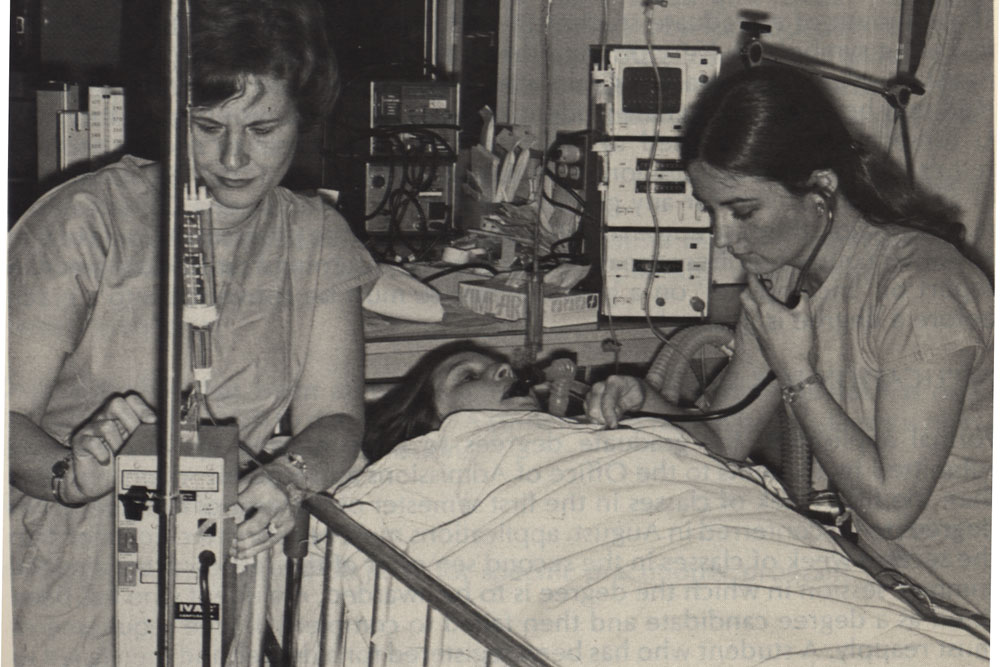Flashback Friday - The Evolution and Education of ER Nurses

Early emergency rooms – a far cry from today’s gleaming, orderly, high-tech environments – hearken back to the late 1800s when Lillian Wald created a “first aid room” at New York’s Henry Street Settlement for neighbors who had minor issues, and needed a “quick source of care.” They’d drop in “for advice or care of fresh cuts and bumps, old wounds, eczema, burns, local infections, small accidents conjunctivitis.” By 1900, demand for this style of care was so great that three more first aid rooms opened to serve the Henry Street neighborhood, much to the consternation of physicians who grumbled about nursings’ overreach. Despite this, our nation’s first ERs, cared for between 10,000 and 23,000 patients each year.
Though the 1946 Hill-Burton Act spurred the construction of many new hospitals across the U.S., mid-20th century America still had relatively few ERs until the 1960s when more and more patients turned to them for convenient, if not urgent care. Most ERs were overseen by RNs, who were often left to diagnose and treat patients independently, given a national dearth of physicians. That drove an interest in nursing specialization and, in response, educational programs to prepare emergency nurses also began to form.
Initially, specialty training for ER nurses was done largely in courses taught by physicians. But universities developed more formal advanced practice nursing programs after a 1963 report TOWARD QUALITY IN NURSING prompted some $50M in funding for the Nurse Training Act of 1964, and another $68 billion in tuition, which was awarded to some 48,000 nurses who attended graduate school between 1965 and 1971. In 1970, nurses Anita Dorr and Judith Kelleher formed the Emergency Nurses’ Association, which championed emergency specialization for nurses, a move endorsed by the American Nurses Association.
Concurrent with this was the 1965 Medicare and Medicaid Act, which provided government funding for healthcare for poor and elderly citizens, many of whom – shunned by physicians who did not wish to accept the government’s low reimbursement rates – turned to ERs for care. At that point, UVA Hospital had more than 35,000 emergency department visits each year – and a sizable need to better prepare.
In 1972, UVA School of Nursing opened the nation’s second specialty program for emergency nurses (Alleghany Hospital in Pittsburg, PA, was the first), a program founded by UVA alumna Denise (Geolot) Sherer (BSN `70, PM `75, PhD `95), and UVA Hospital ER physician Richard Edlich. The program offered graduates certification as EMT-A and CPR instructors and a certificate (there was no national NP exam at that point) from the state of Virginia confirming that they were trained as “emergency nurse practitioners.”
The nine-month program taught key concepts across three, three-month modules: the first focused on interview techniques and physical assessment skills; the second on the emergency medical system more broadly, including a three-week clinical rotation in one of the seven emergency rooms around the Commonwealth; and the third and final portion of the program – which students themselves arranged – was a three-month preceptorship in the community hospital in which they hoped to work, a site where they would implement and document needed changes within.
Of note was the requirement of ENP’s to learn soft tissue wound care for patients with traumatic injuries and lacerations that required bleeding control and which were at risk of developing serious bacterial infection. The emergency nurse practitioners’ work was stellar. A study of 100 patients treated by these certified ENPs found just a 1 percent incidence of infection – exactly identical to the rates of infection for such injuries addressed by physicians.
The program ran between 1972 but closed in 1982, later merging into the acute care NP role. Despite its brevity, a cohort of exceptionally educated and prepared emergency nurse practitioners served hospitals across Virginia and around the U.S. with the non-nonsense poise and confidence such work requires (and which 2019 graduate Billy Burris continues in his role as an ER nurse for UVA Health, making us proud and grateful).
“Armed with this training,” wrote Sherer and her colleagues in an August 1977 article in the Journal of the American College of Emergency Physicians, “the student should develop an important affective trait: confidence in face of the critically ill and injured patient.”
###
This Flashback Friday brought to you by the Bjoring Center for Nursing Historical Inquiry, with special thanks, as always, to Arlene Keeling, professor emerita and president of the American Association for the History of Nursing. Sources include: No Place Like Home: A History of Nursing and Home Care in the United States, by Karen Buhler-Wilkerson (JHU Press: 2003); Geolot, D., Alongi, S., & Edlich, R. (1977). “Emergency nurse practitioner: An answer to an emergency care crisis in rural hospitals.” The Journal for of the American College of Emergency Physicians, 6(8), 355-357; Snyder, A., Keeling, A., & Razionale, C. (2006). “From ‘First Aid Rooms’ to Advanced Practice Nursing. A glimpse into the history of emergency nursing. Advanced Emergency Nursing Journal, 28(3), 198-209; and Mr. Jefferson’s Nurses, by Barbara Brodie (2001: UVA). #histnursing #nursinghistory
